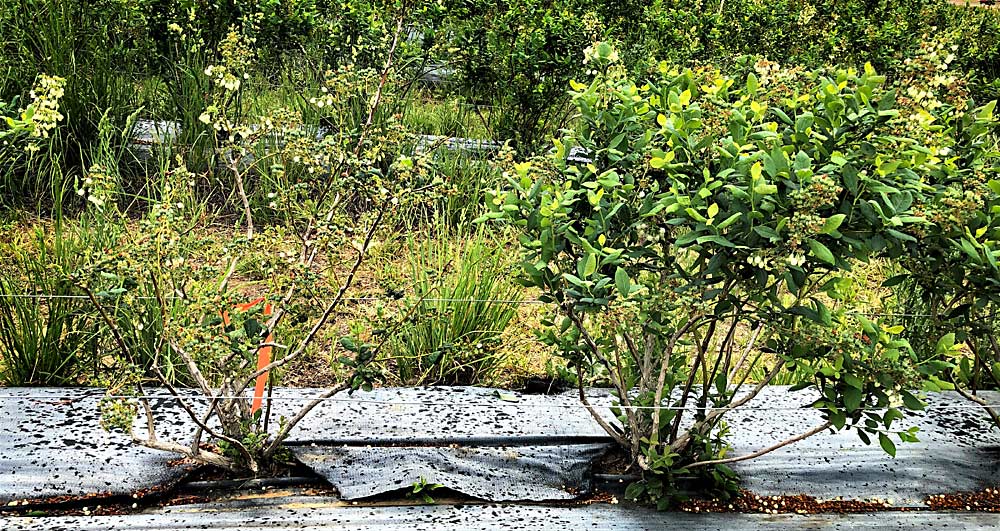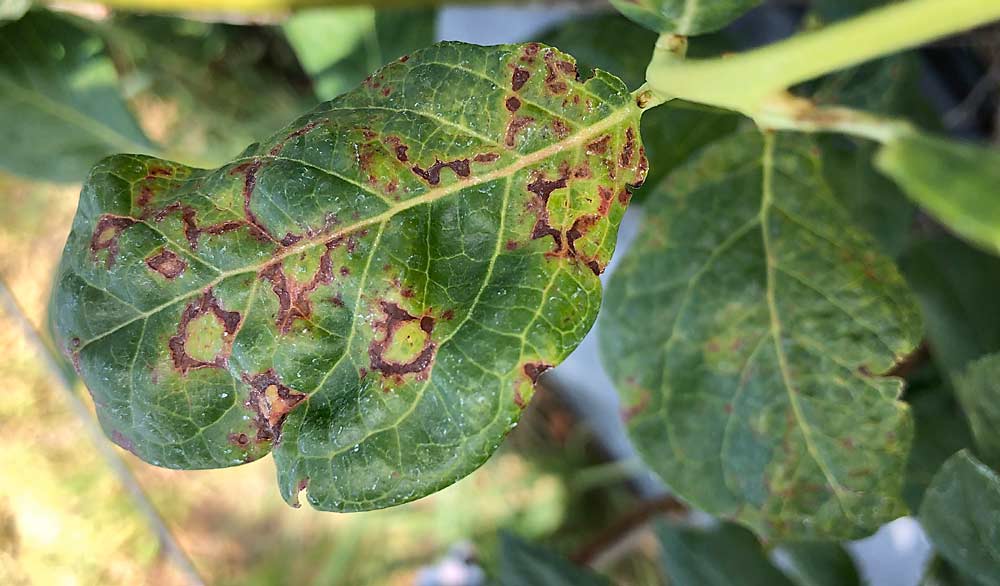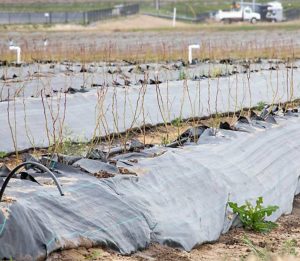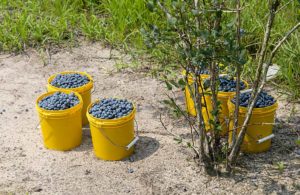
Blueberry growers tending the rapidly growing acreage of Eastern Washington generally enjoy low disease and pest pressure. However, that doesn’t mean they get a free pass.
Viruses can attack plants in their area, too. And they have.
Washington State University researchers know of one Eastern Washington blueberry field infected with tobacco ringspot virus, and they don’t know for sure where it came from.
“This is a kind of wake-up call,” said Naidu Rayapati, a virologist at WSU’s Irrigated Agriculture Research and Extension Center in Prosser.
Tobacco ringspot is a virus common to a wide array of crops, including Washington’s wine grape and tree fruit industries. However, the 2015 finding is the first documented blueberry case on the West Coast, Rayapati said.
The Pacific Northwest blueberry industry is more familiar with scorch and shock viruses. Those are present on the west side of the Cascade mountains, where the industry has a longer history, though growers in Western Washington are not currently removing any bushes due to those viruses, said Lisa DeVetter, associate professor of small fruits horticulture at WSU’s Northwestern Washington Research and Extension Center in Mount Vernon.
Rayapati suspects Eastern Washington, where acreage has been surging the past 10 to 15 years, most likely has scorch and shock as well, but problems probably are too minor to notice, he said. So far, at least. Given time, diseases can become major economic problems — the way little cherry disease, or X disease, has walloped the state’s sweet cherry industry.
“This is an example of when industry stakeholders have to pay attention,” Rayapati said.
The discovery of a new blueberry virus in Eastern Washington does not surprise Jack Ringe, an agronomist for OVS, an agricultural supply vendor. New industries usually start squeaky clean. As they grow, more plant material moves around and, odds are, eventually a disease or two takes hold, he said.

Rayapati and his team diagnosed the Washington tobacco ringspot case with next-generation sequencing technology after a grower with unexplainable decline symptoms asked for help. He had recently planted the field on virgin ground, so that ruled out replant problems.
Rayapati suspects the virus, transmitted by soilborne dagger nematodes, came with some of the bushes, purchased in pots from a nursery. He and the grower found nematodes in the soil. Since then, the virus has slowly been spreading and the grower has patches of decline, though it has not turned up in any other fields.
Symptoms of tobacco ringspot in blueberry typically manifest strikingly around bloom, with small, missing or deformed leaves, stunted plant growth, a lack of flowering and, later, small berry clusters that don’t mature. Leaves also bear ring-shaped lesions — for which the virus is named.
Blueberry leaves sickened by scorch virus, which is transmitted by aphids, can have similar-looking leaf patterns, while the pollen-borne shock virus might not show any symptoms at all. Knowing the difference informs management decisions.
“It’s very important to have a proper diagnosis,” Rayapati said.
Viruses have no cure. The best — and most common — advice is to avoid them by only purchasing and planting certified plants. Most nurseries have rigorous protocols to test for viruses, including tobacco ringspot in blueberries, said Gwen Hoheisel, a WSU extension specialist.
Nothing is foolproof, of course. The virus has a wide host range and can survive dormant in native plants and weeds.
“All kinds of stuff has the ability to host nematodes and viruses,” she said.
Fumigation before planting is a preventative tool, but once plants are in the ground, options are limited, she said.
Within the row, consider placing physical barriers of wood, plastic or metal between infected plants and their neighbors, to stop nematode movement, then remove the infected plant, she said. Researchers are still studying how well that works.
Between rows, maintain cover crops inhospitable to nematodes or the virus. Researchers, such as Inga Zasada of the U.S. Department of Agriculture in Corvallis, Oregon, are researching how different species of nematodes interact with cover crops and other plants in the Pacific Northwest.
—by Ross Courtney








Leave A Comment